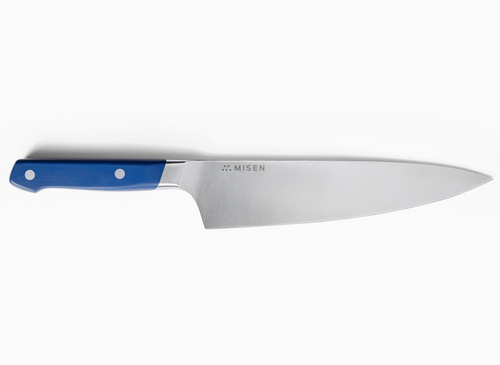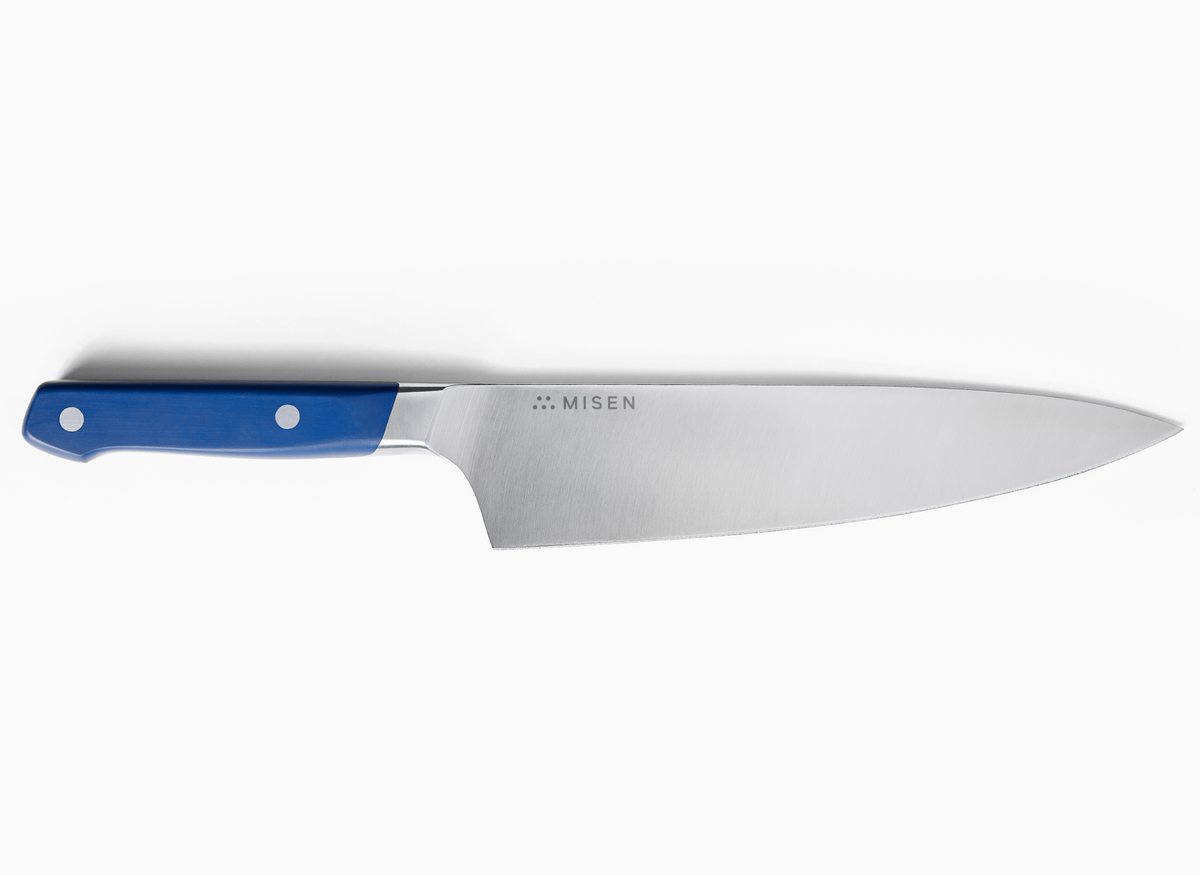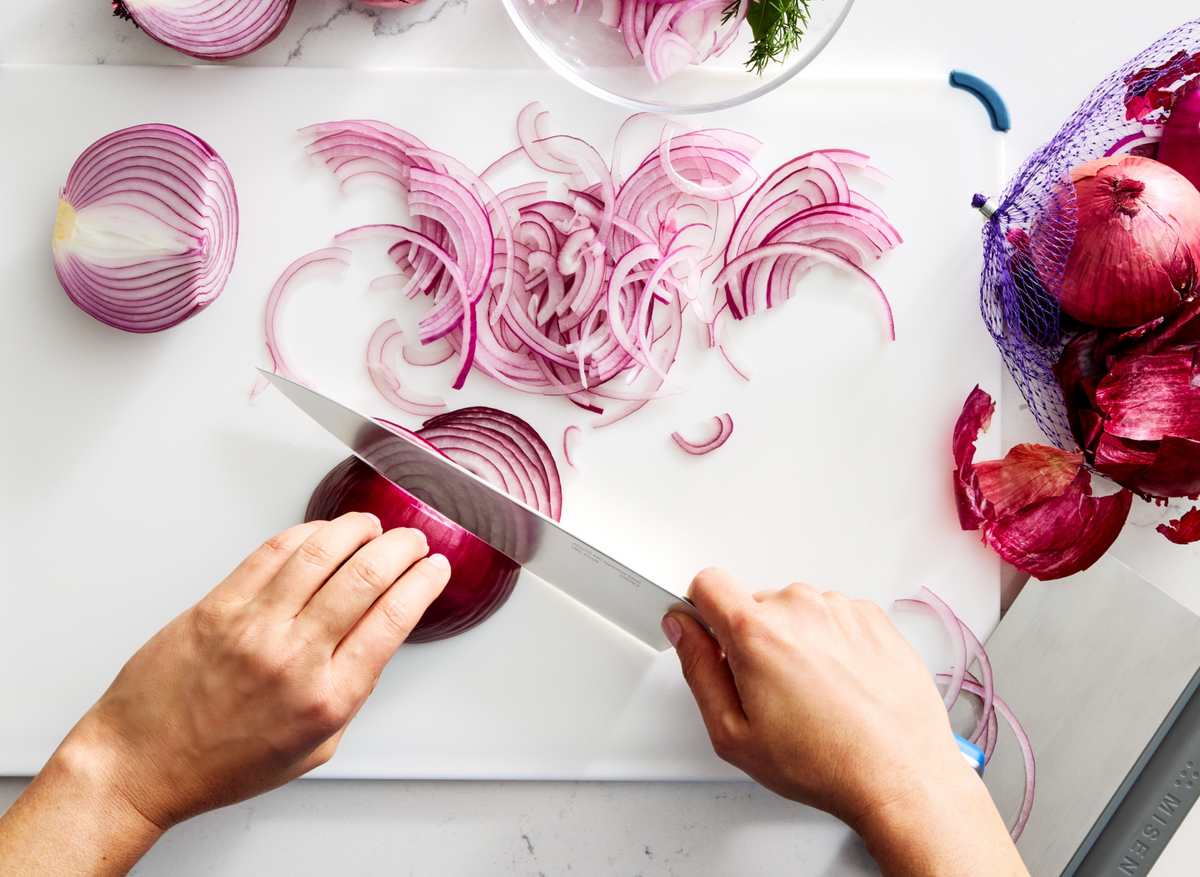How To Cut Bell Peppers

Table of Contents
Summary
Mastering proper cutting techniques for bell peppers is crucial for culinary success, kitchen safety, and maximizing yield. This guide explores various cutting methods, from basic techniques to advanced tips, and provides insights on how to incorporate bell peppers into a range of cuisines.
5 Key Takeaways
- Use a sharp knife and stable cutting board for precise, safe cuts.
- Remove seeds and membranes efficiently to minimize waste.
- Employ specific cutting styles like rings, dices, and julienne for different culinary applications.
- Store cut bell peppers properly to maintain freshness and nutritional value.
- Incorporate bell peppers into various cuisines and cooking methods to enhance flavor and presentation.
Introduction

Proper cutting techniques for bell peppers are essential for both culinary success and kitchen safety. A sharp knife, like the Misen Chef's Knife[1], is crucial when working with these thick-skinned vegetables. The correct cutting method not only makes the task easier but also minimizes waste and preserves the pepper's nutritional value.
One key aspect of proper technique is seed management. By adopting a strategic approach, such as cutting the pepper vertically from bottom to stem end while it's upside down, you can effectively contain the seeds and streamline the cleaning process. This method not only keeps your workspace tidy but also allows for more precise cuts.
Mastering various cutting methods, such as halving, ringing, julienning, and dicing, allows you to adapt your preparation to suit a wide range of recipes and cooking styles. Efficient cutting techniques also help preserve the nutritional benefits of bell peppers, which are rich in vitamins C, B6, and E, as well as antioxidants like quercetin[2]. By minimizing handling and cutting time, you reduce nutrient loss due to oxidation.
Preparing to Cut Bell Peppers
Selecting the Right Tools
When it comes to cutting bell peppers, having the right tools is crucial. The Misen Chef's Knife, with its sharp edge and balanced design, effortlessly slices through the tough exterior of the pepper and allows for precise cuts[1]. Its versatility extends beyond initial cutting, facilitating the creation of uniform pieces for even cooking and aesthetically pleasing presentations.
Choosing a stable, durable cutting board is equally important. Lightweight options, such as those made from paper composite materials, provide a stable surface while being easy to store and handle. Their non-porous nature is particularly beneficial when working with juicy vegetables like bell peppers, as it prevents liquid absorption and potential bacterial growth[3].
Washing and Drying the Pepper
Proper washing and drying of bell peppers ensure food safety and optimal flavor. Begin by thoroughly rinsing the pepper under cool running water, gently rubbing the surface to remove any dirt or debris. After rinsing, dry the pepper completely with a clean kitchen towel or paper towels. Excess moisture can make the pepper slippery and difficult to handle safely, increasing the risk of knife accidents[4].
The drying process also allows you to inspect the pepper for any blemishes or soft spots. A high-quality bell pepper should feel heavy for its size and have a firm, shiny, and wrinkle-free exterior[5]. If you notice any imperfections, you can easily trim them away during the cutting process.
Basic Cutting Techniques

The 'De-Lobe-er' Technique
The 'De-Lobe-er' technique is an innovative approach that minimizes waste and maximizes yield by taking advantage of the pepper's natural structure. To begin, place the pepper vertically on your cutting board with the stem pointing upward. Using a sharp paring knife, carefully cut around the stem, creating a small hole at the top. Gently pull out the stem, which should bring with it a significant portion of the seeds[6].
Next, slice the pepper in half vertically and remove any remaining white pith and seeds. Place the pepper skin-side down and identify the natural divisions between the lobes. Make clean cuts along these divisions, effectively separating the pepper into its constituent parts[7]. This approach results in neat, uniform pieces ideal for various culinary applications while significantly reducing waste.
Removing Seeds and Membranes
Efficiently removing seeds and membranes is crucial for preparing bell peppers. One effective method involves cutting a thin slice off both the top and bottom of the pepper, providing easy access to the inner core and seeds. After trimming, stand the pepper upright on its newly cut bottom and make a single vertical slice down one side. This incision allows you to open the pepper and expose the inner structure without scattering seeds[8].
With the pepper opened, use the tip of your knife to carefully cut away the membranes connecting the seeds to the flesh. This technique allows for a cleaner and more controlled removal of the seeds and pith. Once the membranes are severed, the entire core with attached seeds can be easily lifted out in one piece, leaving you with a clean, seed-free pepper ready for further preparation[8].
Specific Cutting Styles
Slicing into Rings
Slicing bell peppers into rings produces uniform, circular pieces ideal for various applications. To begin, position the pepper on its side and carefully remove about half an inch from both the stem and bottom ends. These trimmed pieces can be saved for snacking or frozen for later use in soups and stocks[2].
With the ends removed, firmly grasp the pepper and use your knife to cut around the inside edges where the veins meet the flesh. This incision allows you to easily remove the core, seeds, and veins in one piece. Starting from the former stem end, slice the pepper into rings of your desired thickness[2]. Thinner rings are excellent for sandwiches or salads, while thicker rings are ideal for grilling or stuffing.
Dicing for Various Recipes
Dicing bell peppers is a fundamental skill for many recipes. To begin, trim approximately half an inch off both the top and bottom of the pepper. Make two vertical slits through the flesh and open the pepper to remove the core and seeds. Lay the pepper halves skin-side down and cut them into strips. The width of these strips will determine the size of your final dice[9].
Once you have your strips, rotate them 90 degrees and use a rocking motion with your knife to cut them into cubes. The size of your dice can vary based on your recipe's requirements, typically ranging from 1/4 to 1/2 inch. For maximum yield and minimal waste, don't forget to dice the trimmed ends of the pepper as well[9]. As you dice, use your non-dominant hand to guide the pepper strips towards the knife, ensuring consistent cube sizes.
Advanced Tips and Tricks
Maximizing Yield and Minimizing Waste

The 'De-Lobe-er' technique, as discussed earlier, is an efficient approach to maximizing yield and minimizing waste. By following the pepper's natural structure, this method allows you to separate the edible portions cleanly from the inedible parts, ensuring that every possible bit of the pepper is utilized[7].
Another professional method involves placing the pepper on its side, trimming off the top and bottom, and cutting away the sides in four pieces, each with a membrane roughly in the middle. This approach leaves the core and seeds intact in the center, eliminating the need to handle them directly. The result is four clean pepper quarters and a central core that can be easily discarded, with minimal seed scatter and maximum usable flesh[10].
Cutting Techniques for Different Colors
When cutting different colored bell peppers, the techniques remain largely the same, but there are subtle differences in texture and flavor to consider. Green bell peppers, being the least ripe, tend to have a slightly tougher skin and a more bitter flavor profile. Yellow and orange peppers occupy the middle ground in terms of ripeness and sweetness, while red peppers, being the most ripe, have the sweetest flavor and the softest texture[2].
When preparing a mix of colored peppers, it's advisable to start with the green peppers and work your way through to the red ones. This order allows you to adjust your cutting pressure as you progress through the increasingly softer textures. Additionally, using separate cutting boards for each color can prevent the stronger flavors of green peppers from transferring to the sweeter varieties[9].
Storing Cut Bell Peppers
Proper storage of cut bell peppers is essential for maintaining their freshness, flavor, and nutritional value. For short-term storage, place the pepper pieces in an airtight container with a paper towel to absorb excess moisture. Store the container in the crisper drawer of your refrigerator, where the humidity levels are optimal for vegetable storage[2].
For long-term storage, freezing is an effective method. Spread the cut pieces on a baking sheet and place them in the freezer. Once frozen, transfer the pepper pieces to ziplock bags for easy storage and portioning. Frozen bell peppers are incredibly versatile and convenient, as they can be easily added to recipes straight from the freezer[2].
Culinary Applications

Best Uses for Different Cuts
Bell pepper rings offer versatility in both raw and cooked applications. They can be enjoyed fresh on sandwiches or as part of a vegetable platter, or air-fried for a crispy, low-oil snack. In cooking, pepper rings add a bold visual element to dishes like chilis or ratatouilles[9].
Julienned bell peppers are perfect for wraps, pitas, and fajitas. The uniform strips cook evenly and quickly, making them an excellent choice for stir-fries or quick sautés. In salads, julienned peppers add a satisfying crunch and vibrant color[7].
Diced bell peppers are incredibly versatile, finding their way into egg dishes, salsas, and as part of the 'holy trinity' in Creole cuisine. When incorporating diced peppers into cooked dishes, consider their cooking time to maintain their crisp texture and vibrant color[9].
Quartered bell peppers are well-suited for grilling. Simply toss them in olive oil and seasonings, then place them on the grill skin-side down until nicely charred and tender. Enjoy them as a flavorful side dish, chopped up in a salad, or sliced to top off a juicy burger[7].
Incorporating Bell Peppers into Various Cuisines
Bell peppers play a crucial role in many cuisines worldwide. In Mediterranean dishes like ratatouille, they combine with other vegetables to create a rich, complex flavor profile. In Latin American cuisine, colorful strips of bell peppers are sautéed alongside onions for fajitas, balancing the richness of the protein. They also form an essential component of sofrito, a flavorful base used in many Cuban dishes[11].
In Asian fusion cuisine, bell peppers are often featured in stir-fries, showcasing their crisp texture and bright flavors. They pair well with basil and other aromatic herbs in Thai-inspired dishes, absorbing and complementing spicy and tangy flavors[11].
Contemporary chefs are finding innovative ways to incorporate bell peppers into unexpected dishes, such as the bell pepper egg-in-a-hole, a healthier twist on the classic breakfast dish. They are also making appearances in creative cocktails, like the Montego Slay, which incorporates muddled yellow bell pepper for an unexpected herbaceous note[11].
Cooking Methods that Complement Different Cuts
Sautéing and stir-frying are excellent methods for bell peppers cut into strips or diced pieces, as they preserve the peppers' crisp texture while enhancing their natural sweetness. Grilling and roasting are transformative for halved or quartered peppers, intensifying their sweetness and imparting a smoky flavor[2].
Stuffed bell peppers are a classic dish that showcases the vegetable's versatility. Halved or whole peppers with the tops removed can be filled with various mixtures, from rice and meat to vegetarian options like quinoa and vegetables. Baking the stuffed peppers creates a perfect harmony of textures and flavors[2].
Boiling and steaming are gentle methods suitable for bell pepper rings or strips when you want to maintain their crisp texture while softening them slightly. These techniques are particularly useful when preparing peppers for cold salads or as a simple, healthy side dish[2].
Conclusion

Mastering the art of cutting bell peppers is a valuable skill for any home cook or professional chef. By understanding the vegetable's anatomy, employing proper techniques, and using the right tools, you can maximize yield, minimize waste, and unlock a world of culinary possibilities.
From basic methods like dicing and slicing to advanced techniques like the 'De-Lobe-er,' each approach offers unique advantages for different recipes and applications. Incorporating bell peppers into various cuisines and cooking methods allows you to showcase their versatility, vibrant colors, and delightful flavors.
As you explore the world of bell peppers, remember that practice makes perfect. With time and experience, you'll develop the skills and confidence to tackle any recipe featuring this colorful, nutritious vegetable. And if you find yourself in need of a reliable, sharp knife to assist you on your culinary journey, consider the Misen Chef's Knife – a versatile tool designed to make your pepper-cutting endeavors a breeze[1].
So, embrace the vibrant world of bell peppers, experiment with different cutting techniques, and let your creativity shine in the kitchen. Your taste buds (and your dinner guests) will thank you.
References
- https://misen.com/products/chefs-knife
- https://www.liveeatlearn.com/how-to-cut-bell-peppers/
- https://www.redstickspice.com/products/epicurean-cutting-board-knife-combo
- https://www.pay-less.com/blog/food/how-to-cut-bell-peppers
- https://www.naturefresh.ca/your-complete-guide-for-cutting-peppers/
- https://thenaturalnurturer.com/how-to-cut-a-bell-pepper-to-minimize-waste/
- https://eatingwithkirby.com/2022/03/best-way-to-cut-a-bell-pepper-with-no-waste.html
- https://collegerecipecafe.com/2013/11/04/cooking-101-remove-seeds-from-a-bell-pepper-without-a-mess/
- https://feelgoodfoodie.net/recipe/how-to-cut-bell-pepper/
- https://www.savorynothings.com/how-to-cut-a-bell-pepper/
- https://www.foodandwine.com/vegetables/peppers/bell-pepper/bell-peppers








